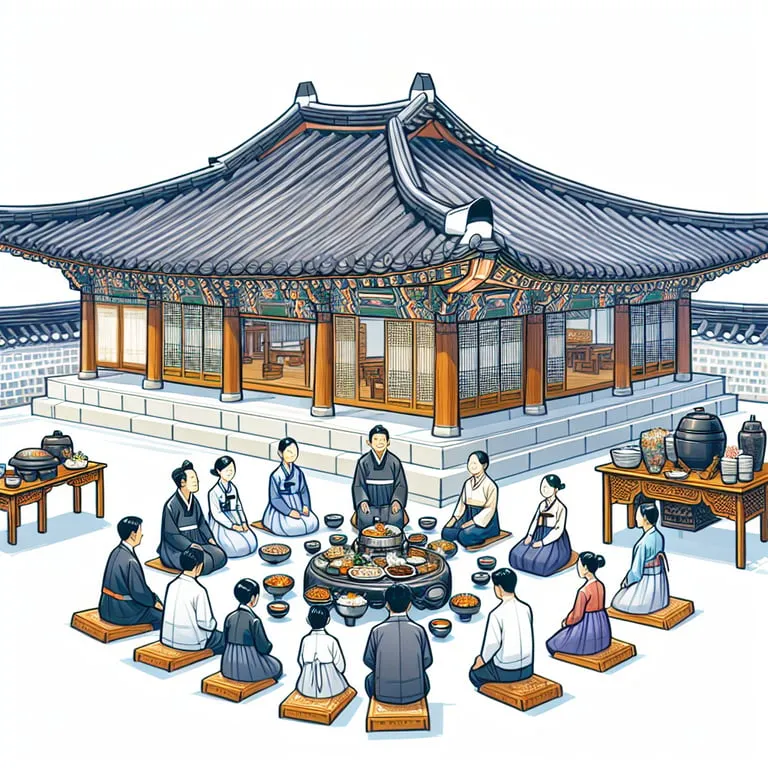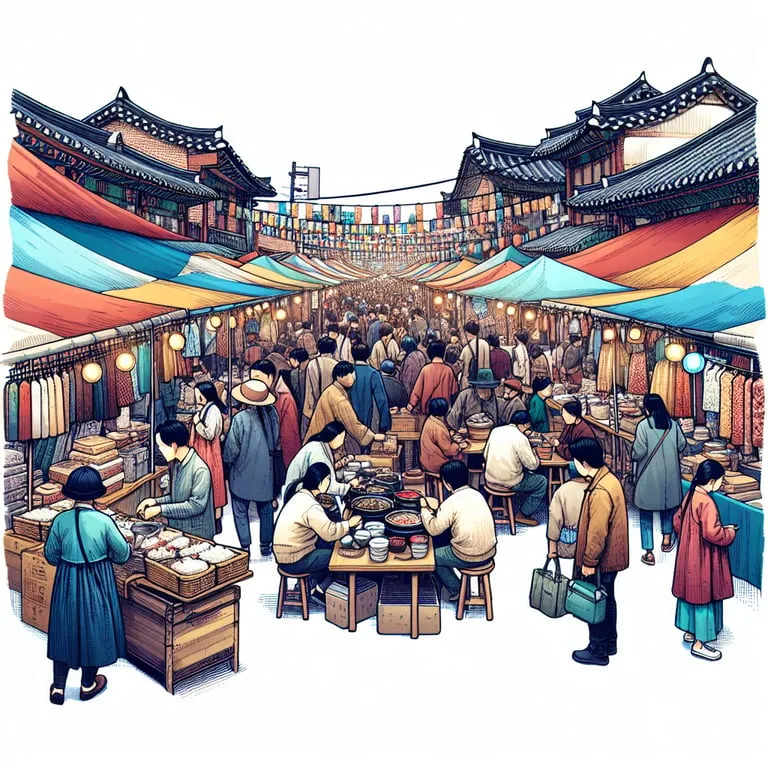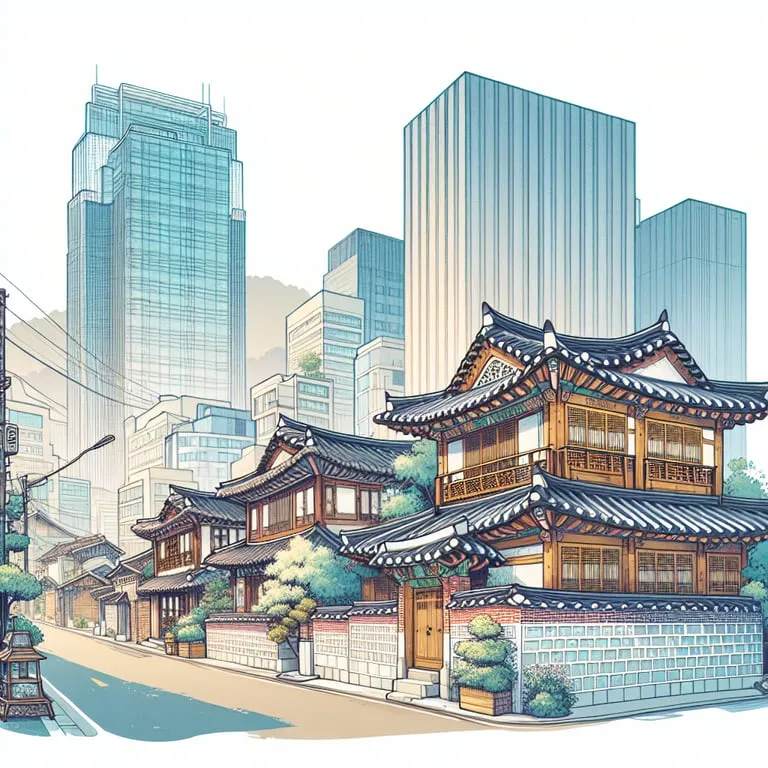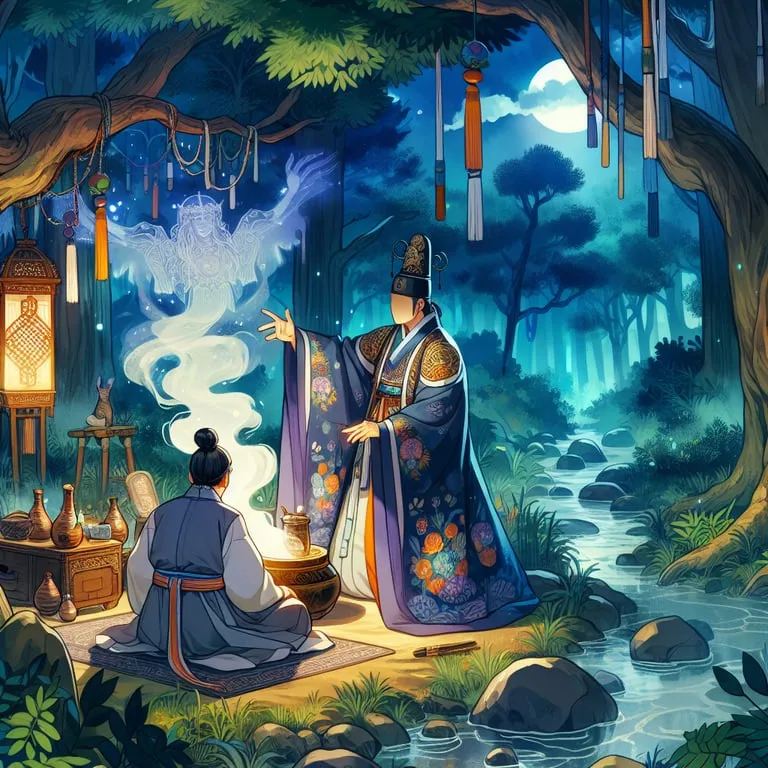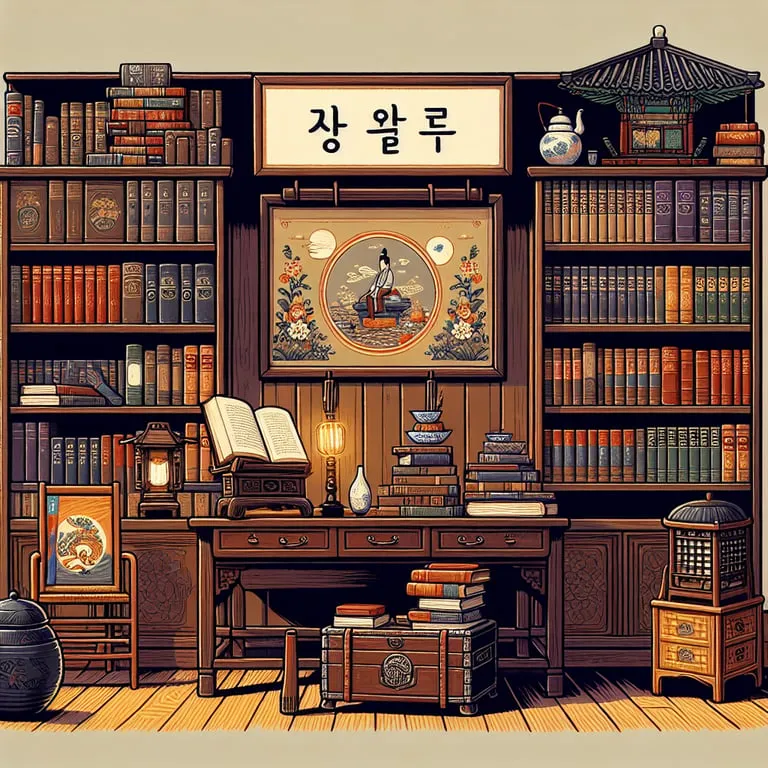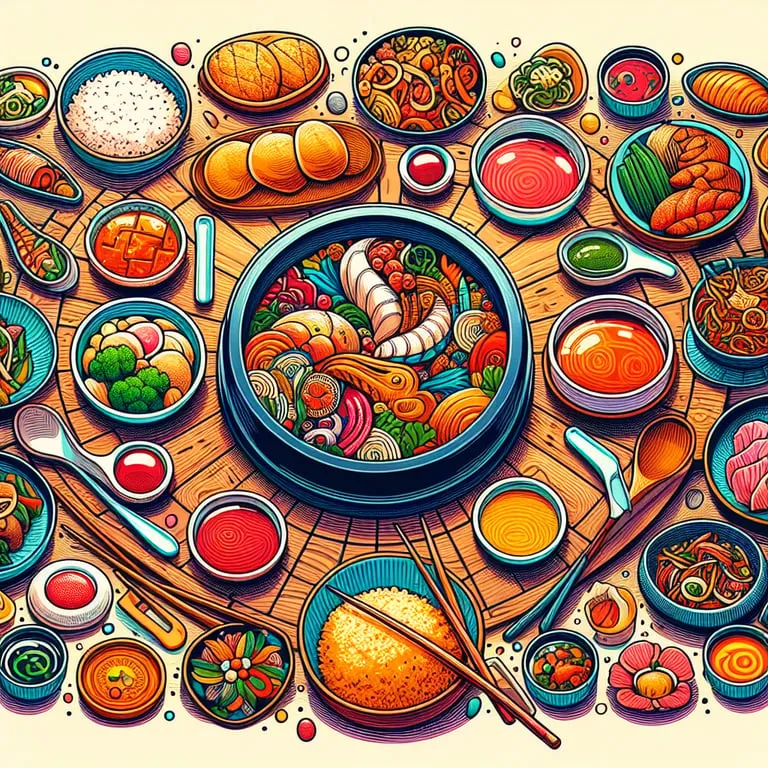Korean cinema has undergone a remarkable transformation, capturing the world’s attention with its unique storytelling and cinematic brilliance. From timeless classics to contemporary blockbusters, Korean films have carved a niche in global cinema. The evolution of Korean cinema is marked by influential directors whose visionary work has left an indelible impact, significant milestones that have shaped its course, and cultural themes that resonate deeply with audiences. This exploration delves into the factors propelling Korean movies into the global spotlight, offering insights into their growing international acclaim and significance.
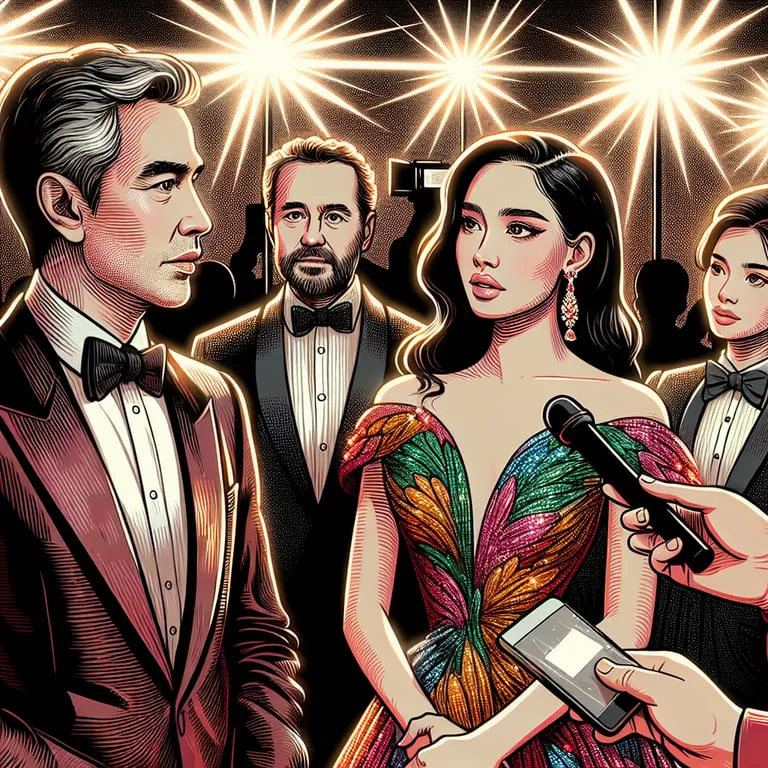
Influential Directors and Their Impact
Korean cinema has flourished tremendously over the decades, largely due to the visionary directors who have shaped its path. These influential figures have not only redefined storytelling within Korea but have also left an indelible mark on the global film industry. Let’s delve into some of these remarkable talents and explore their impact on both domestic and international stages.
Kim Ki-young’s Contribution
The late Kim Ki-young’s groundbreaking work in the 1960s and 70s, notably through films like “The Housemaid” (1960), which is often credited with pioneering the psychological melodrama genre in Korea, is one example. His innovative techniques and narrative style set a new standard in Korean filmmaking, contributing to what critics call “the Golden Age” of Korean cinema. His work was not just about telling stories but also challenging societal norms and reflecting the complexities of human desires and morality – themes that have resonated with audiences far beyond Korea’s borders.
Bong Joon-ho’s Global Impact
Moreover, the more recent contributions of Bong Joon-ho have undeniably propelled Korean cinema into the global spotlight. Bong Joon-ho’s “Parasite,” which garnered the prestigious Palme d’Or at the Cannes Film Festival in 2019, followed by four Academy Awards in 2020, including Best Picture, marked a historic moment for Korean cinema. His films are renowned for their ability to deftly blend dark humor with searing social commentary, creating a unique cinematic experience that challenges the status quo and captivates international audiences.
Park Chan-wook’s Iconic Films
Park Chan-wook is another iconic name in the Korean film industry, known for his masterpieces such as “Oldboy” (2003) and “The Handmaiden” (2016). His focus on visual aesthetics and intricate narratives has set a benchmark for filmmakers worldwide. Park’s films often explore themes of vengeance and human emotion through a lens of striking cinematography and unexpected plot twists, leaving audiences both stunned and enchanted.
Lee Chang-dong’s Storytelling Mastery
Then there is Lee Chang-dong, whose films such as “Burning” (2018) have been hailed as poignant portrayals of human struggles and psychological depth. Lee’s ability to weave intricate, slow-burning plots that evoke deep emotions shows his mastery in pushing the boundaries of traditional storytelling. His impact is evident as “Burning” became the first Korean film to make it to the final nine-film shortlist for the Best Foreign Language Film Oscar, signaling how Korean narratives resonate universally.
Hong Sang-soo’s Unique Style
For a broader perspective, directors like Hong Sang-soo, known for his minimalist style and improvisational narratives, also play a crucial role. His films often portray mundane life with profound elegance, capturing the nuances of reality and drawing comparisons to the works of European auteurs – a testament to the global interconnectivity of cinematic language.
Statistics and recognition awards only scratch the surface of these directors’ impacts. From Cannes to the Oscars, these directors have bagged numerous awards, with South Korea’s contributions gaining significant recognition. According to the Korean Film Council, there has been a steady increase in international box office earnings for Korean films, demonstrating both the appeal and the quality of these movies on a global scale.
The power of Korean directors lies not just in their ability to create compelling visuals and narratives but also in their courage to address complex social issues. Their films often serve as a mirror to society, reflecting and dissecting issues such as class disparity, gender roles, and historical tensions, thereby prompting both national and international audiences to engage in dialogue about these pivotal topics.
In conclusion, the directors of Korean cinema have transcended cultural barriers and set new benchmarks within the industry, paving the way for future generations of filmmakers. They have transformed Korean cinema into a reputable force that continues to inspire, challenge, and entertain audiences worldwide. As the influence of these visionary directors persists, one can only anticipate the evolution and expansion of Korean cinema’s global reputation. The journey of Korean cinema is a testament to the power of story—one that is continually shaped by these directors’ indomitable spirits and unyielding creativity.
Key Milestones in Korean Film History
The history of Korean cinema is a tapestry woven with artistic innovation, cultural storytelling, and significant socio-political influences. From its nascent stages in the early 20th century to its current standing as a global cinematic powerhouse, several key milestones have defined the evolutionary trajectory of Korean film.
Inception and Early Developments
The very inception of Korean cinema can be traced back to 1919 with the silent film “Fight for Justice,” marking its humble beginnings. This first production was a silent justice drama, indicative of the nation’s thirst for narratives that aligned with the socio-political sentiments of a country under Japanese rule at the time. This period also witnessed another significant development—the introduction of “Pyonsa,” or live narrators, who played a pivotal role in storytelling during the silent film era, adding a uniquely Korean touch to the cinematic experience.
The Golden Age of Korean Cinema
One cannot overlook the transformative period following the Korean War, often termed the “Golden Age of Korean Cinema” (1950s-1960s). The economic and cultural revitalization of the country ignited a burgeoning film industry. In 1961, one of the standout films, “The Housemaid,” directed by Kim Ki-young, was released. This psychological thriller was pivotal, showcasing innovation in narrative style and cementing its place as a cinematic classic, influencing generations of filmmakers. Indeed, the 1960s heralded a prolific period, with film production surging to over 200 films annually, each contributing to the tapestry of Korea’s cinematic identity.
Censorship and Storytelling Innovation
The subsequent decades saw Korean cinema grappling with strict censorship under authoritarian rule, which, while stifling in some respects, also led filmmakers like Im Kwon-taek and Park Kwang-su in the 1980s to develop more nuanced storytelling techniques to circumvent these restrictions. “Mandala” (1981) by Im Kwon-taek and “Chilsu and Mansu” (1988) by Park Kwang-su poignantly reflected the socio-political climate of the times, delving deeply into themes of identity and resistance.
The Renaissance of the 1990s
The real renaissance was yet to come in the 1990s, a decade reminiscent of creative liberation. The dissolution of draconian censorship laws in 1988 and the Film Promotion Law of 1995 ushered in an era of innovation, with filmmakers exploring bold subjects and novel cinematic styles. Directors like Lee Chang-dong and Bong Joon-ho emerged during this transformative period, bringing fresh narrative perspectives. Bong Joon-ho’s “Memories of Murder” (2003) and Lee Chang-dong’s “Peppermint Candy” (2000) are seminal works that have contributed to the global conversation on Korean cinema, with their keen observations on human nature and society.
21st Century and Global Recognition
The 21st century marks a truly global stage for Korean cinema, with films like “Oldboy” (2003), directed by Park Chan-wook, electrifying international audiences and critics alike. The film received the Grand Prix at the Cannes Film Festival, signifying global recognition. Such achievements were further cemented by Bong Joon-ho’s “Parasite“ (2019), a masterpiece that swept the international stage by winning the Palme d’Or and four Oscars, including Best Picture. This marked the first time a non-English language film won the prestigious award, signifying the culmination of centuries of artistic and cultural progress in Korean cinema.
K-Cinema Today
Moreover, the global phenomenon of K-cinema today can be partly attributed to the Korean government’s strategic efforts in boosting cultural exports. The Korean Film Council (KOFIC), established in 1973, played an instrumental role by funding domestic projects and facilitating international film festivals, allowing for cultural exchange and the proliferation of Korean storytelling worldwide.
In summary, the journey of Korean cinema is defined by its resilience and innovation, reflecting both societal currents and individual artistic missions. As of 2023, the industry continues to thrive, a testament to its ability to adapt and resonate on a global cultural stage. Each milestone is a reflection of Korea’s rich history and the extraordinary depth of its cinematic expression.
Cultural Themes Explored in Korean Movies
The world of Korean cinema is a tapestry woven with intricate threads of cultural themes that have captivated audiences globally. From the historical to the contemporary, Korean films delve deep into societal norms, personal dilemmas, and national identity, offering viewers a chance to explore complex narratives and emotions. Some of the most prominent themes in Korean movies include social hierarchy, familial relationships, historical memory, and existential despair. These themes resonate deeply with audiences, offering both a mirror to Korean society and a window to the world.
Social Hierarchy and Class Conflict
Korean cinema has been acclaimed for its critical examination of social hierarchies and economic disparities. The most internationally renowned example, Bong Joon-ho’s “Parasite,” which won the Palme d’Or at the Cannes Film Festival in 2019 and later took the Academy Awards by storm in 2020, masterfully portrays the struggles between the wealthy and the poor in a hyper-capitalistic society. This film, along with classics like “The Housemaid” directed by Kim Ki-young, digs into the dangerous games of power and subjugation, often with tragic or violent outcomes. These stories reflect a broader societal critique, drawing parallels to the pressures and inequalities faced by individuals in real-life scenarios.
Familial Bonds and Obligations
Family dynamics form another foundational pillar in Korean film narratives. The institution of family is central to Korean culture and is frequently examined through various cinematic lenses, from melodrama to thriller. Lee Chang-dong’s “Secret Sunshine” and the poignant “Oasis” explore themes of forgiveness, love, and redemption within the fractious family unit. Meanwhile, “Ode to My Father” offers an epic portrayal of one man’s sacrifices for his family amidst the backdrop of Korea’s tumultuous modern history. These films highlight the cultural emphasis on familial duty and the emotional weight these obligations can carry, resonating with audiences on a deeply personal level.
Historical Memory and National Identity
Korean history, replete with colonization, war, and economic transformation, often serves as a backdrop for filmic exploration. The raw and powerful “The Age of Shadows” directed by Kim Jee-woon, tackles the period of Japanese occupation in Korea, blending action with a nationalist impulse. In addition, “A Taxi Driver,” a poignant recounting of the Gwangju Uprising, presents the harrowing struggle for democracy and remembrance. Films like these underscore the importance of historical memory in shaping and preserving national identity, ensuring the blood and sweat of past generations remain present and influential in the cultural psyche.
Existential Despair and Isolation
The theme of existential despair is a recurrent motif that mirrors the individual’s journey through alienation and introspection. “Oldboy,” directed by Park Chan-wook, is an intense exploration of revenge, identity, and the human psyche. Contrastingly, the quieter but equally compelling narratives of Hong Sang-soo frequently portray mundane, existential musings and the search for meaning against the backdrop of everyday life. Park Chan-wook’s enigmatic “The Handmaiden” further touches upon themes of societal repression and personal freedom through its intricately layered narrative and character study. Such films often pose unresolved existential questions, engaging audiences in reflection long after the credits roll.
Gender Roles and Feminism
Another critical lens through which Korean cinema is viewed is the exploration of gender roles and the evolving discourse on feminism. Films such as “Kim Ji-young: Born 1982” confront deep-rooted patriarchal norms and the struggles of contemporary women in Korean society. Meanwhile, “Lady Vengeance” by Park Chan-wook powerfully flips the gender narrative through its tale of retribution. These narratives scrutinize the cultural expectations placed upon women, challenging traditional roles, and highlighting the movement towards gender equality in modern Korea.
Conclusion on Cultural Exploration
Through masterful storytelling, Korean films continue to push the envelope, weaving rich cultural themes into their narratives. The cinematic exploration of social, familial, historical, and existential themes offers not just entertainment but also a profound commentary on the human condition. By illuminating aspects of Korean culture, these films cultivate a deeper understanding and empathy among international audiences, solidifying Korean cinema’s place on the global stage as both an art form and a cultural dialogue. The ongoing evolution and global recognition of Korean cinema promise even more rich and diverse explorations in the future.
The Global Rise of Korean Cinema
In the last two decades, Korean cinema has undergone an unprecedented ascent, capturing the minds of both critics and audiences around the world. This “Hallyu” wave, or Korean Wave, refers to the global popularity of South Korea’s cultural economy exporting pop culture, entertainment, music, TV dramas, and films. The global rise of Korean cinema is not merely anecdotal; it is well-documented through significant milestones and statistics reflecting the industry’s robust growth.
“Parasite”: A Landmark Achievement
In 2019, “Parasite,” a film directed by Bong Joon-ho, achieved a historic win at the Academy Awards. It became the first non-English film to win the Best Picture Oscar in the award show’s 92-year history. The success of “Parasite” catalyzed Korea’s cinematic acclaim, acting as both an apex and a turning point for its international recognition. Statistically, it grossed over $263 million worldwide, a testament to its universal appeal and the power of storytelling that transcends cultural boundaries.
Innovation in Genre and Storytelling
Beyond individual achievements, Korean cinema has been applauded for its innovative approach to genre and storytelling. Films like “Oldboy,” directed by Park Chan-wook, have set new standards for neo-noir thrillers, while the zombie film “Train to Busan” received rave reviews for its thrilling narrative and socio-political commentary. According to the Korean Film Council (KOFIC), the country’s cinema attendance reached over 226 million in 2019, peaking before the pandemic, with numerous films making a significant imprint on global box offices.
Influence in International Film Festivals
The influence of Korean cinema is also buoyed by its inclusion in international film festivals. Korea has routinely made its mark in Cannes, with works like “Burning,” “The Handmaiden,” and “The Wailing,” commanding attention and accolades. The Cannes Film Festival awarded the prestigious Palme d’Or to Bong Joon-ho for “Parasite” in 2019, reinforcing Korea’s standing in the echelons of global cinema.
Factors Fueling the Rise
But what fuels this meteoric rise? It is a confluence of government support, innovative storytelling, and strategic marketing. The South Korean government has long recognized the film industry as a vital export. Through subsidies, tax incentives, and initiatives like the Korean Academy of Film Arts, it has nurtured talent and fostered creativity. The government’s investment plays a critical role, providing filmmakers the freedom to experiment while ensuring that Korean narratives reach a global audience.
Role of Digital Platforms
Moreover, digital platforms like Netflix have expanded the worldwide accessibility of Korean films, allowing viewers from diverse cultures to experience Korean storytelling first-hand. In 2020, Netflix pledged to invest $500 million in Korean content, illustrating a growing commitment to bring Korea’s unique narratives to a vast audience. The platform’s worldwide reach has undoubtedly propelled films like “Time to Hunt” and series such as “Kingdom” into the global spotlight, evidencing an appetite for engaging, culturally nuanced content.
Technological Advancements
Technologically, Korea has positioned itself at the frontier of filmmaking advancements. Employing cutting-edge visual effects, sound design, and cinematography, Korean films often boast production values that rival Hollywood standards. This technical proficiency not only attracts global audiences but also allows Korean films to explore complex themes with finesse and precision.
Thematic Depth
Thematically, Korean films offer rich narratives that delve into socio-economic issues, familial dynamics, and psychological depth. Directors like Lee Chang-dong and Hong Sang-soo explore themes of existentialism and societal construct, drawing insights into the human condition that resonate globally. The distinct ability of Korean filmmakers to balance local appeal with universal themes sets their work apart, providing a cinematic language that is both specific and omnipresent, unique yet relatable.
The evolution of Korean cinema is ongoing, with its boundaries continually expanding. As directors keep pushing creative limits, the international community continues to anticipate the next groundbreaking work from South Korea. It’s a thrilling era for Korean cinema—rich with potential, ripe with innovation, and resonant with a global audience eager to explore and engage in the stories it has to tell. Korean cinema’s global rise marks not just a victory for its film industry, but a triumph for cultural exchange and storytelling on an international scale. The journey is far from over, and the horizon beckons with new stories, ready to captivate and transcend cultural and linguistic barriers.
Korean cinema has traversed a remarkable path, evolving from its early classics to the global phenomenons of today. Through influential directors and pivotal milestones, the industry has carved a unique space in the world of film. Cultural themes resonate deeply, offering insights into societal dynamics. This rich tapestry of storytelling has captivated international audiences, contributing to Korean cinema’s prestigious standing on the world stage. As interest in Korean films continues to grow, it reflects not only artistic excellence but also the power of cinema to transcend cultural barriers. The future of Korean cinema, undoubtedly, holds further promise and innovation.
“The Rise of Korean Street Fashion: Trends and Influences”
“Exploring Korean Folklore: Myths and Legends”
“Korean Traditional Festivals: Celebrations Throughout the Year”
“The Art of Korean Pottery: From Celadon to Contemporary Ceramics”
“Korean Pop Culture’s Impact on Global Beauty Standards”
“A Guide to Korean Traditional Music: Instruments and Genres”
“Understanding Korean Etiquette: Do’s and Don’ts”
“The Influence of Korean Cuisine on Global Food Trends”
“Exploring the Han River: Activities and Attractions”
“Korean Literature: Must-Read Books and Authors”
“The History and Significance of Korean Shamanism”
“Korean Architecture: From Ancient Palaces to Modern Skyscrapers”
“A Guide to Korean Street Markets: Shopping and Street Food”
“The Role of Confucianism in Korean Society”
“Exploring Korea’s National Parks: Nature and Hiking Trails”
“Korean Animation: The Growth of ‘Manhwa’ and Its Global Impact”
“The Evolution of Korean Cinema: From Classics to Modern Hits”
“Korean Tea Culture: Varieties and Traditions”
“Exploring Jeonju: The Heart of Korean Traditional Culture”
“The Impact of Korean Technology Companies on the Global Market”
“Korean Traditional Medicine: Practices and Benefits”
“The Significance of Family in Korean Culture”
“Exploring Korean Contemporary Art: Artists and Exhibitions”
“The Role of Education in Korean Society: A Cultural Perspective”
“Korean Proverbs and Their Meanings: Insights into the Culture”
“The Popularity of Korean Webtoons: A New Era of Comics”
“Exploring Busan’s Beaches: A Coastal Getaway”
“Korean Martial Arts: Beyond Taekwondo”
“The Influence of Buddhism on Korean Art and Culture”
“Korean Home Cooking: Recipes and Techniques for Beginners”


